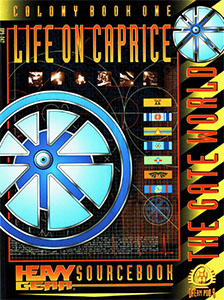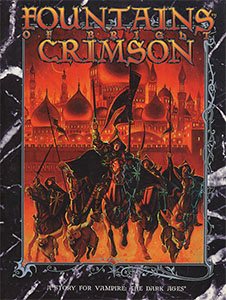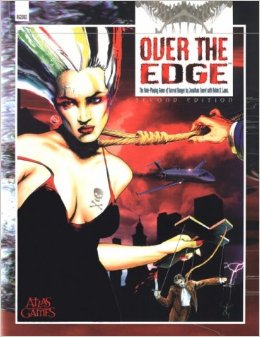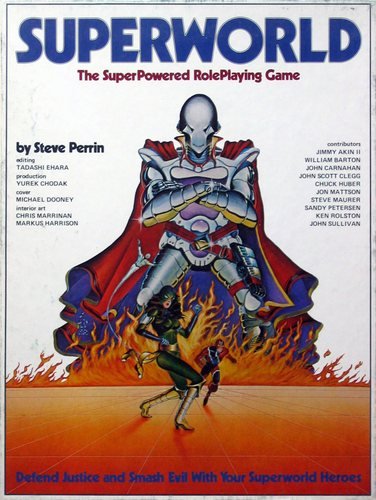
From Reddit:
At the conclusion to this school year’s campaign, in order to pick up at the beginning of next semester, I want to have Pelor and Sehanine fight, with Pelor winning and eating Sehanine’s heart to become corrupted. However, if I just set the gods in a valley and describe what happens as they throw down, I feel like I am taking away my players agency. Advice?
My response to this is based on Part 2 of The Art of Pacing, and I thought it raised some specific points that might be of interest to others:
Right now you’re setting the agenda of the scene as, “Will Pelor eat Sehanine’s heart?” That’s an understandable impulse because it’s clearly the biggest and coolest thing happening in that particular moment. But, as you note, that agenda doesn’t mention the PCs at all and, therefore, prevents them from taking any meaningful action.
Instead of focusing on the outcome of the god-fight, you need to figure out what the PCs’ agenda will be during the fight: What is it they’re trying to accomplish and what are the obstacles they’ll need to overcome to accomplish it?
Another way to think about this would be to replace the god-fight with a similarly cataclysmic event. For example, the PCs are in Los Angeles and the Big One hits the San Andreas fault. The agenda here would not be, “Will the earthquake destroy Los Angeles?” The answer to that question is beyond the PCs’ control. The agenda will instead involve the PCs reacting to the immediate chaos and destruction around them, probably answering variations of, “Can you survive?” or “Can you save that person/place/item?”)
Or you could actually think of the god-fight as a spectator event. For example, let’s say your PCs go to a football game. There are two possibilities here: Either the event is narrated very quickly and you move on to the next interesting thing which actively involves the PCs (“The game goes to sudden death overtime, but the Vikings pull out a victory. What do you do after the game?”). Or you’re focused on an event happening at the football match which is unrelated to the game (so that the agenda is something like, “Will Carlie kiss you?”). Or the PCs are able to take actions which somehow impact the outcome of the game (by stopping the gangsters who are trying to assassinate the star wide receiver or by outfitting the home team’s shoes with Flubber or whatever).
Returning to the god-fight, you’ll find that the same techniques apply. You could spend 30 seconds describing the titanic fight in brief (but effective) detail before moving onto the next agenda that’s immediately relevant to the PCs. Or you could set agendas that:
- Deal with the collateral damage of the fight (saving themselves or others).
- Use the god-fight as the backdrop for some other conflict. (Which may have nothing to do with the god-fight; for example, as the gods begin to fight the PCs might be attacked by a group of assassins. The narration of the god-fight backdrops or thematically complements the fight against the assassins; maybe by-products from the god-fight affect the assassin fight in cool ways.)
- Allow the PCs to directly affect or influence the god-fight (maybe there are local shrines to the gods that they can imbue with energy; or they could organize mass prayers; or travel to points of sympathetic divine resonance in the region and sacrifice their divine spell slots to aid their god).
- Or the outcome of the god-fight (for example they might be able to take actions during the fight which will either aid or hinder them later while dealing with Pelor’s corruption).
- Allow the PCs to learn something from the god-fight.
If you’re struggling to come up with an appropriate agenda, don’t be afraid of letting your players set the agenda. For example:
GM: Pelor and Sehanine start to fight. What do you do?
Players: We RUN!!
Presto. The agenda is, “Can they escape?” and you should be able to run with it from there. Even if they decide there’s no possible agenda for them to pursue (like people just enjoying the football game in front of them), it’s still a useful technique:
GM: Pelor and Sehanine start to fight. What do you do?
Players: We sit in stunned silence and watch.
Now you can launch into you 60 second description of the titanic battle playing out in front of them, but you haven’t removed their agency. (They’re the ones who chose to stay and watch.)
Final tip: Break the fight into a half dozen or so distinct beats. Describing these beats succinctly is the 60 second description, but the beats also provide a flexible structure for any other agendas that might be pursued. (If they start fighting assassins, for example, each beat gets described as the backdrop to a round of combat. If they try to save people in a nearby village, some or all of the beats provide complications to that effort. And so forth.)
















